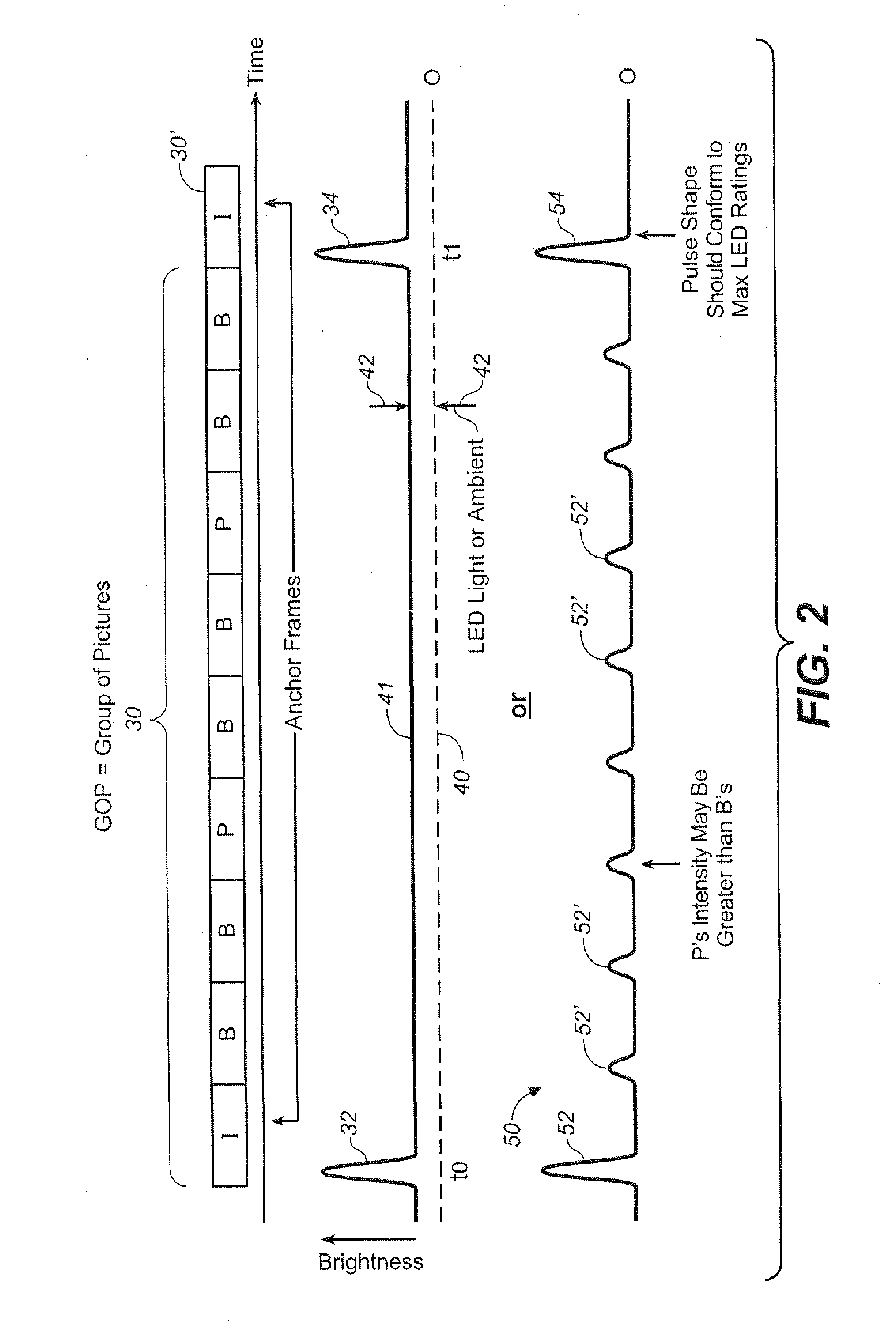Technique for Enhancing the Quality of Compressed Video Images
a video image and compression technology, applied in the field of optical systems, can solve the problems of low quality video not being useful as evidence, creating additional burden and cost for network operators, and problems such as the storage of all the data generated by high-definition security cameras, and achieves the effect of reducing noise artifacts and great compression
- Summary
- Abstract
- Description
- Claims
- Application Information
AI Technical Summary
Benefits of technology
Problems solved by technology
Method used
Image
Examples
Embodiment Construction
[0013]FIG. 1 is a block diagram of an imaging system 10 to illustrate an embodiment of the invention. A light source 12, comprising for example one or more light emitting diodes (LEDs), (even though only one LED shown in FIG. 1), generates light along arrows 12a to illuminate a scene (not shown). Light from the scene is sensed by a camera 14, which provides images of the scene to an imaging capture device such as video capture block 16. Camera 14 may be any conventional type, such as one employing CCD or CMOS devices that accumulate electrical charges in response to light. Video capture block 16 converts analog or digital signals from the camera 12 into a digital stream which is supplied to video compression block 18 where the digitized images are compressed using a conventional technique, such as one according to one of the MPEG standards. The compressed images are then transmitted to a communication network such as a cable network or the internet 20 or are stored in a storage medi...
PUM
 Login to View More
Login to View More Abstract
Description
Claims
Application Information
 Login to View More
Login to View More - R&D
- Intellectual Property
- Life Sciences
- Materials
- Tech Scout
- Unparalleled Data Quality
- Higher Quality Content
- 60% Fewer Hallucinations
Browse by: Latest US Patents, China's latest patents, Technical Efficacy Thesaurus, Application Domain, Technology Topic, Popular Technical Reports.
© 2025 PatSnap. All rights reserved.Legal|Privacy policy|Modern Slavery Act Transparency Statement|Sitemap|About US| Contact US: help@patsnap.com



